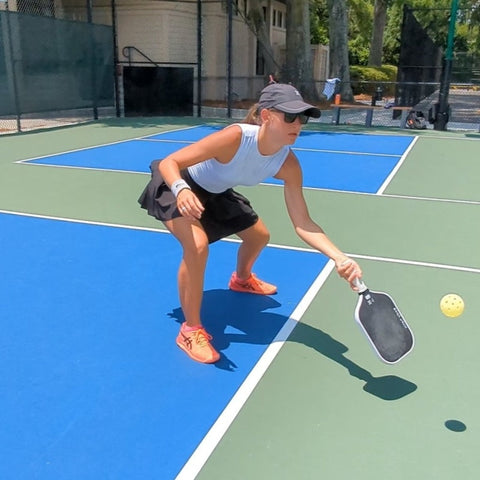Introduction
Pickleball, known for its fast-paced action and strategic gameplay, has a unique feature called the No Volley Zone (NVZ), or the "kitchen." This area is a 7-foot zone on both sides of the net where players cannot volley the ball. Understanding the NVZ is essential for players aiming to excel in pickleball. Let's dive into its rules, strategies, and how it affects the game.
Understanding the No Volley Zone
The No Volley Zone is a rectangular area extending 7 feet from the net on both sides of the court, marked by a distinct boundary line. Players cannot volley the ball while standing inside this zone. The NVZ rule promotes fair play, prevents aggressive net domination, and encourages strategic shot placement and anticipation.
Rules Governing the No Volley Zone
To follow the NVZ rules in pickleball, players need to understand these guidelines:
- Volleys: A volley is hitting the ball in the air without letting it bounce. Players are prohibited from volleying the ball while standing inside the NVZ.
- Foot Faults: Players must avoid foot faults, which occur when they step on or inside the NVZ boundary line while attempting to hit the ball. Proper footwork and positioning are crucial.
The NVZ Impact on Play
- Encourages Intelligent Play: The NVZ promotes the use of "dinks," soft shots that land in the opponent’s kitchen. This forces strategic play rather than relying on power. Players often hit dinks to make opponents decide whether to let the ball bounce or take it out of the air, creating hesitation and potential points.
- Levels the Playing Field: By stopping volleys close to the net, the NVZ prevents domination through powerful smashes. It encourages a mix of skills like placement, touch, and strategy.
- Keeps Rallies Going: Since players have to let the ball bounce in the NVZ, rallies last longer, making the game more exciting. It’s also harder to add topspin to balls in the kitchen, giving opportunities to put the ball away if the opponent tries.
- Boosts Movement and Agility: Players need to be quick on their feet to move in and out of the NVZ, adding a physical challenge to the game.
- Adds Depth to Gameplay: The NVZ encourages a variety of shots like drops, lobs, and angled dinks. This mix adds depth and requires both offensive and defensive skills. Long dink contests often lead to opportunities for put-away shots.
- Increases Court Awareness: Players need to be aware of their positioning, especially near the NVZ. This awareness is crucial for hitting precise shots and avoiding faults.
Conclusion
Many higher-level recreational tennis players are “serve and volley” types. They hit a hard serve, follow it in, and try to win the point by taking the return out of the air. This is especially common in doubles. However, this approach doesn’t work in pickleball, and that can be a tough concept for beginners to grasp. Mastering the NVZ will enable you to not only advance as a player but also to have fun with strategy.
-Greg Hansen

- https://theadventurousboomer.blog/
- Level 2 IPTPA pickleball instructor
- US Senior Pickleball Ambassador
- Certified Level 3 whitewater kayak instructor

